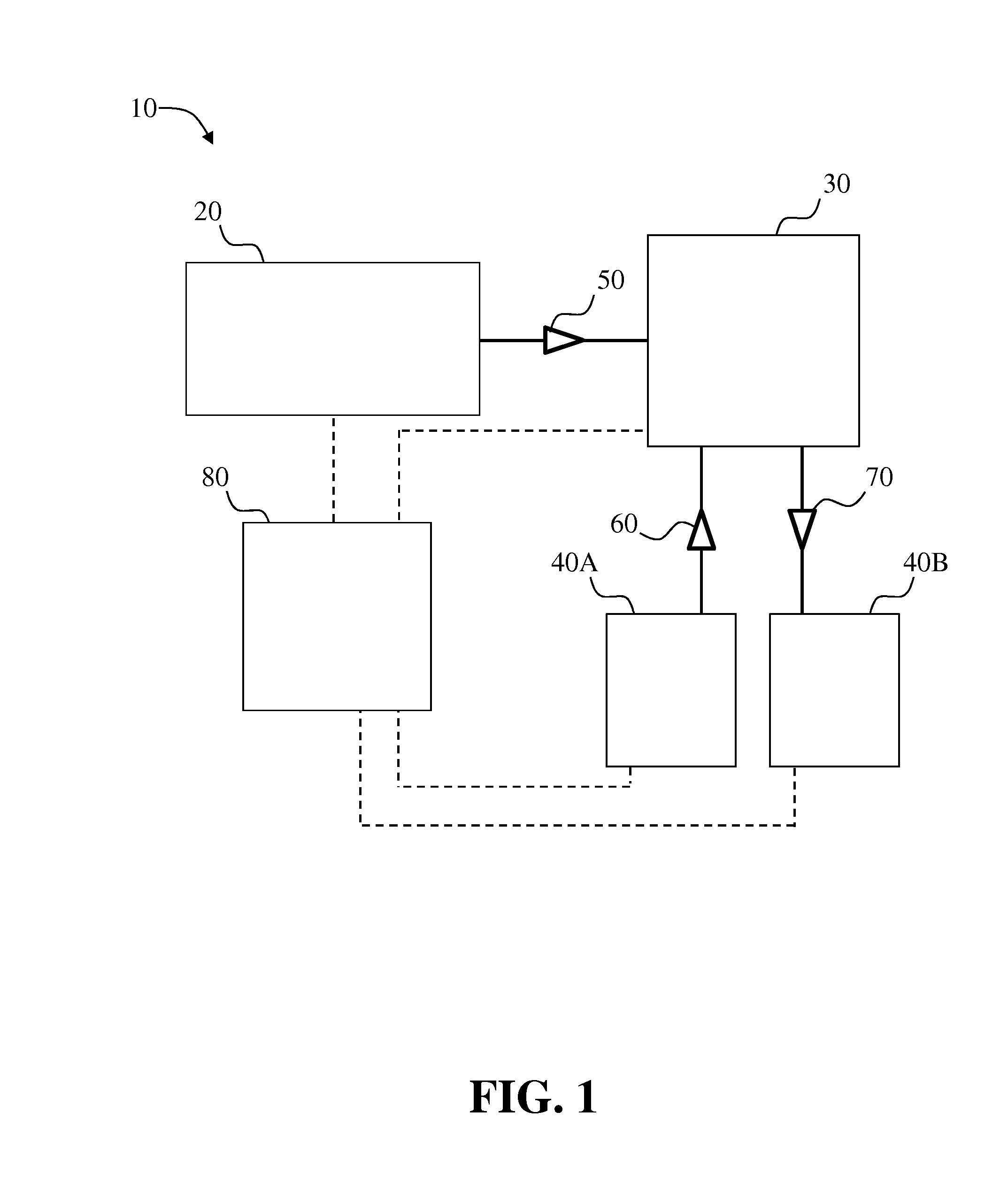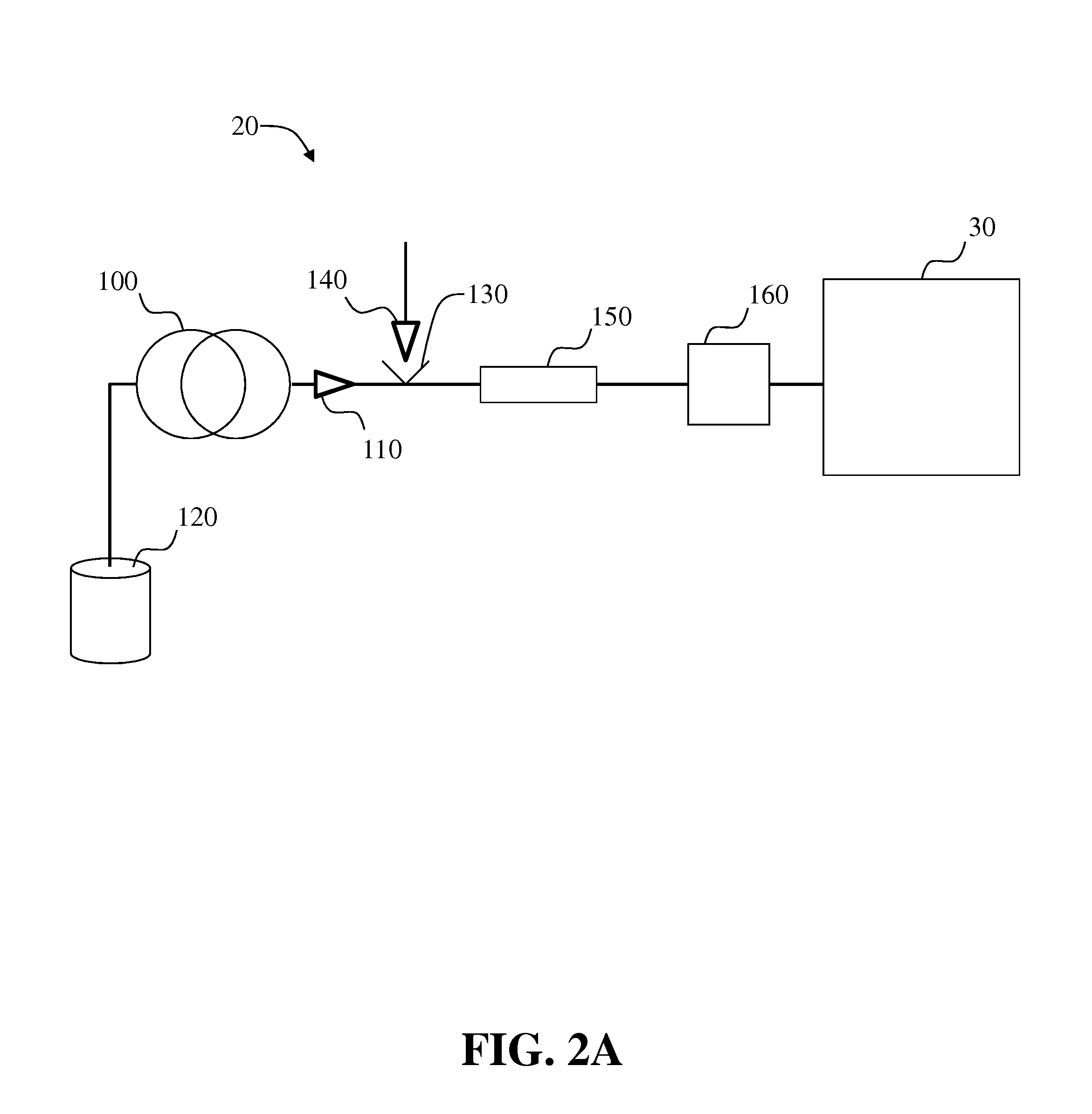Systems and methods for two-dimensional chromatography
a chromatography and two-dimensional technology, applied in the field of multi-dimensional chromatography systems and methods, can solve the problems of limiting the separation capability of the second dimension, limiting the sensitivity and solvent compatibility of the 2d chromatography, and posing a big challenge in the interface design, so as to reduce the amount of rplc solvents
- Summary
- Abstract
- Description
- Claims
- Application Information
AI Technical Summary
Benefits of technology
Problems solved by technology
Method used
Image
Examples
example 1
[0277]The analytical instrument is a customized two-dimensional 1260 2D-LC-SFC system with mass spectrometer from Agilent Technologies (Santa Clara, Calif., USA). The RPLC unit consists of an Agilent 1260 quaternary pump (G1311B), a 1260 HiP ALS auto-sampler (G1367E), and an Agilent 1260 multi-wavelength UV detector (G1365C). Stainless steel fittings and tubing are used throughout the system due to high pressure considerations. The SFC unit consists of a 1260 SFC binary pump (G4302A) with a three position solvent control valve, a 1260 HiP degasser (G4225A), a 1290 thermostated column compartment (G1316C), an eight-position Agilent 1290 infinity valve drive (G1170A), an Agilent 1260 DAD (G1315C) equipped with a high-pressure flow cell, and an Agilent 1260 infinity SFC control module (G4301A). Part of the SFC flow was directed towards an Agilent 6120 quadrupole MS. An Agilent 1260 iso pump (G1310B) was used to generate a make-up flow of 0.15 mL / min in order to compensat...
example 2
[0279]The primary objective of this study was to evaluate the effect of the volume of the mobile phase transferred from the first dimension to the second dimension on the resolution of the separation in the second dimension (SFC). Here, a multidimensional chromatography system was used to separate the enantiomers of trans-stilbene oxide (TSO). The first dimension (RPLC) was interfaced with the second dimension (SFC) using a valve with a sample loop lacking a trapping column. The sample loop was used to store a selected volume of the first mobile phase containing a portion of the sample eluted from the first dimension. Subsequently, the volume of the first mobile phase stored in the sample loop was transferred to the second dimension for further separation. Sample loops allowing for the storage, and subsequent transfer, of 6 μL, 12 μL, and 24 μL of mobile phase were used.
[0280]For the first RPLC dimension, an ACQUITY UPLC HSS T3 1.8 μm 2.1×50 mm column was utilized under an isocratic...
example 3
[0284]In this example, the efficiency of transferring a sample from a first dimension (RPLC) to a second dimension (SFC) using an interface containing a trapping column was evaluated.
[0285]Solutions of TSO standard ranging from 0.005 mg / mL to 0.25 mg / ml were analyzed using the 2D LC-SFC system illustrated in FIG. 8A and FIG. 8B. The second detector was a UV detector. Based on the results from Example 2, a C18-reversed-phase trapping column of low internal volume was evaluated.
[0286]The reversed-phase chromatograph utilized in the first dimension was an Acquity UPLC HSS T3 column (50×2.1 mm, 1.8 μm) from Waters Corporation (Milford, Mass., USA). The separation in the first dimension was run under isocratic conditions with 50:50 (0.05% formic acid in water):(0.05% formic acid in ACN) at a flow rate of 0.2 mL / min. The RPLC column was placed in the SFC thermal column compartment at 40° C. UV detection was done at 225 nm. The first dimension injection volume was 5 μL.
[0287]The supercriti...
PUM
| Property | Measurement | Unit |
|---|---|---|
| temperature | aaaaa | aaaaa |
| temperature | aaaaa | aaaaa |
| temperature | aaaaa | aaaaa |
Abstract
Description
Claims
Application Information
 Login to View More
Login to View More - R&D
- Intellectual Property
- Life Sciences
- Materials
- Tech Scout
- Unparalleled Data Quality
- Higher Quality Content
- 60% Fewer Hallucinations
Browse by: Latest US Patents, China's latest patents, Technical Efficacy Thesaurus, Application Domain, Technology Topic, Popular Technical Reports.
© 2025 PatSnap. All rights reserved.Legal|Privacy policy|Modern Slavery Act Transparency Statement|Sitemap|About US| Contact US: help@patsnap.com



